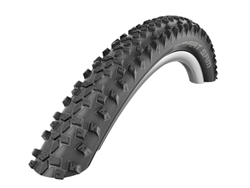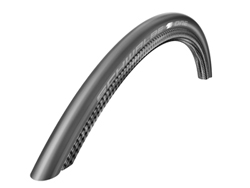WHAT DOES THE TIRE TREAD DO?
On a normal, smooth road, the tread has only limited influence on the riding properties. The grip generated by the tire on the road is almost exclusively the result of the rubber compound.
Unlike a car, a bicycle will not aquaplane. The contact area is much smaller and the contact pressure is much higher. The floating effect of aquaplaning could only theoretically be achieved on a bicycle ridden at speeds over 200 km/h.
Off road though, the tread is very important. In this situation the tread establishes an interlocking cog-like connection with the ground and enables the transmission of all driving, braking and steering forces. On rough or dirty roads, the tread can also contribute to better control.

WHY RIDE A SLICK TIRE?
On a normal, smooth road, even in wet conditions, a slick tire actually provides better grip than a tire with a tread, because the contact area is larger.
The situation is much different on a rough road and even worse on a dirt trail. In these cases the degree of control provided by a slick tire is extremely limited.

WHAT DO THE DIRECTION ARROWS MEAN?
Most Schwalbe tire sidewalls are marked with a "ROTATION" arrow, which indicates the recommended rolling direction. When in use, the tire should run in the direction of the arrow. Older tires have the marking “DRIVE”, but it has the same meaning.
Many MTB tires are marked with a "FRONT" and a "REAR"- arrow. The “FRONT” arrow indicates the recommended rolling direction for the front wheel and respectively the “REAR” arrow is the direction for the rear wheel.

WHY ARE SO MANY TREADS DIRECTION DEPENDANT?
In the case of a road tire the rolling direction is mainly important for aesthetic considerations. Tires marked with arrows simply look more dynamic.
Off road, the rolling direction is far more important, as the tread ensures optimumconnection between the tire and the ground. The rear wheel transmits the driving force and the front wheel transmits the braking and steering forces. Driving and braking forces operate in different directions. That is why certain tires are fitted in opposite rotating directions when used as front and rear tires.
There are also treads without a specified rotating direction.


